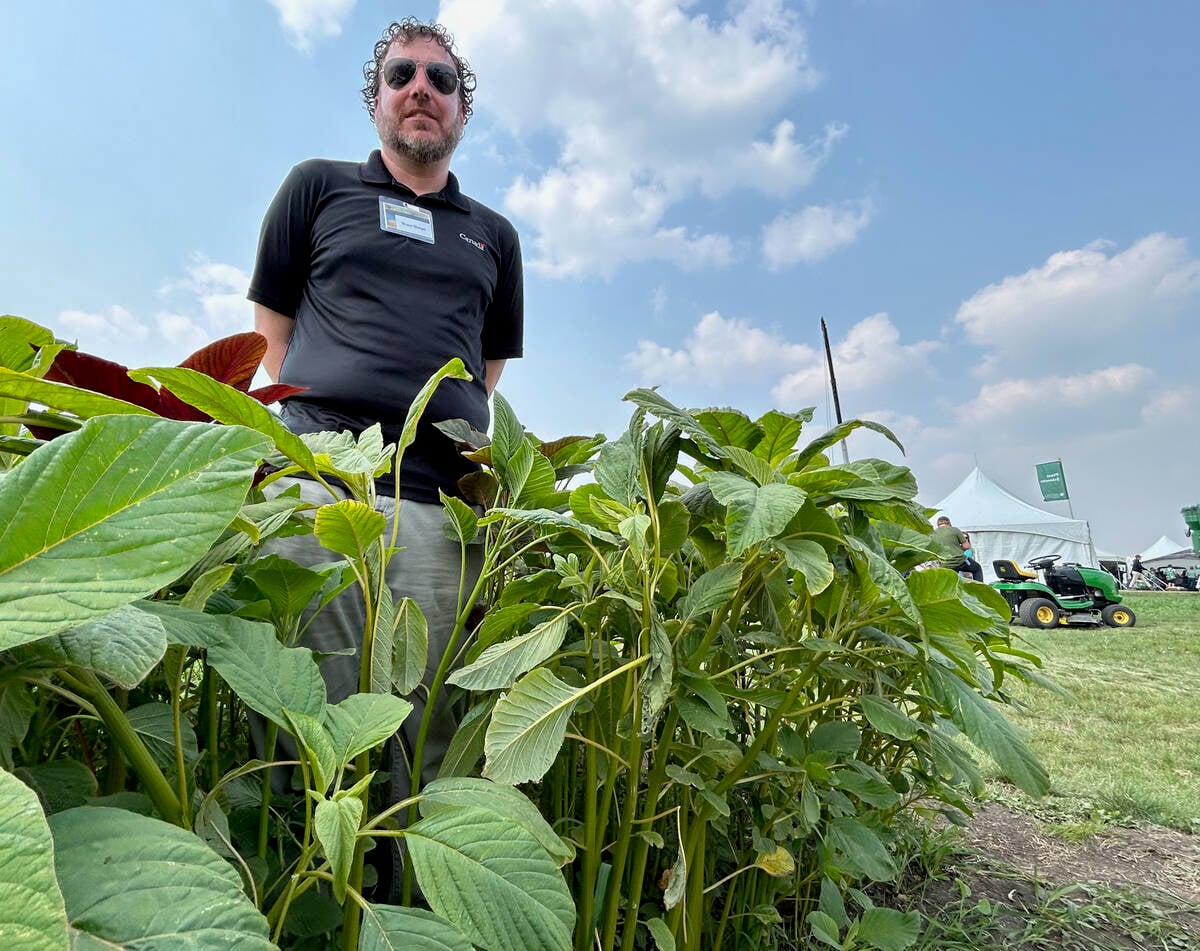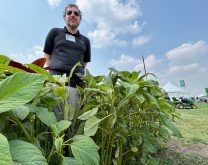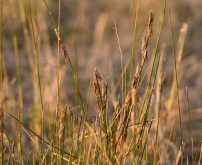It’s a frequent refrain on the Canadian Prairies — herbicide-resistant weeds are a growing problem that every farmer needs to take seriously.
The alarm bells have been going off for some time, so most everyone in Canadian ag knows this by now. An example of that is a Canola Digest article from Jan. 6, 2023, on how herbicide resistance is viewed as a top threat to farmers.
The article by Jay Whetter reports the Canola Council of Canada asked 330 agronomy providers to list what agronomic risk factors were likely to be the greatest concerns for their farmer customers over the coming five years.
Read Also

Glufosinate-resistant waterhemp appears in U.S. Midwest
News of glufosinate-resistant kochia in the U.S. is concerning as farmers are losing options to control waterhemp, also of the pigweed family.
The No. 1 answer in the August 2022 survey was herbicide-resistant weeds, which was named by 68 per cent of the respondents. It was the top selection in Alberta and Saskatchewan by a wide margin, and in Manitoba it came in second behind increased insect pressure.
Best practices that promote herbicide stewardship are helping, of course. But the ongoing war against herbicide-resistant weeds isn’t letting up, and battles continue to break out on multiple fronts.
According to the International Survey of Herbicide-Resistant Weeds, a joint effort by weed scientists in more than 80 countries, the list of herbicide-resistant weeds in Canada has grown to 122 since the first instances of wild carrots with resistance to 2,4-D were reported in 1957. More than half of these resistant weeds have been added since 2000, and 15 of these within the last decade.
It’s not just a matter of new resistant weeds turning up. Weeds that already have resistance are also spreading out — something Breanne Tidemann pointed out at the Manitoba Agronomists Conference (MAC), which I attended in December.
“In addition to all of these new cases that we’re seeing, the ones we already had are becoming more common,” said Tidemann, a weed scientist with Agriculture and Agri-Food Canada based in Lacombe, Alta. “They’re taking up more area, they’re becoming more frequent, so it’s sort of a two-pronged thing.”
In Tidemann’s mind, all of this means “we really need to be looking at non-herbicide management tactics.”
More options for farmers
Fortunately for farmers, there are options. The key, according to Tidemann, is to think outside of the box, which was the theme of her MAC presentation.
“There is a lot of new technology out there to help our weed control be more effective and efficient, and really this is limited by your imagination,” she said.
Tidemann noted outside-the-box weed control “doesn’t have to be fancy or difficult to implement.” She said some could be as simple as tweaking your current cropping system, such as increasing seeding rates for certain crops so they can outcompete weeds.
Another way to boost crop competitiveness is to band fertilizer below the soil surface, rather than broadcast it, so that seedlings can get to nutrients more quickly. Tidemann described cultural controls like these as “basics you can (use) the next field season that can have significant impacts on your weeds.”
She also described measures to tackle weeds more directly, including several options for harvest weed seed control.
“The goal … is to manage the weed seeds that are still in the field at harvest and prevent their dispersal. Right now, when we take our combines through at the end of the field season, the weed seeds that are in there, most of them are coming right out in the chaff (and) we are broadcast seeding them.”
Tidemann identified some weed control solutions for collecting the chaff — and the weed seeds it contains — coming out of the back of combine harvesters. These include chaff carts (originally developed in Western Canada but more widely used now in Australia) and bale direct systems.
Another option is to destroy the weed seeds themselves. Tidemann said with implements such as the Australian-made Integrated Harrington Seed Destructor (iHSD), the chaff stream goes into a physical impact mill attached to the combine that grinds or breaks the weed seeds down into small enough pieces that they can’t germinate.
She acknowledged cost is an obstacle to adoption, since price tags for the iHSD and three other mechanical weed crushers on the market (the Seed Terminator and the TecFarm WeedHOG, both made in Australia, and the Canadian-made Redekop Seed Control Unit) run between $50,000 to $120,000.
Tidemann, who is currently assessing data on the efficacy of these implements on weeds in Western Canada, added prices have come down a little and she’s starting to see more of them on Prairie farms.
Turning back to weed plants, not weed seeds, Tidemann said there is a growing list of devices for eradicating weeds from fields — some available now or soon, others perhaps not for another five or 10 years. She noted some implements designed for horticultural use could possibly be adapted for the kind of broad-acre crops grown on the Canadian Prairies.
Tidemann’s list included mechanical farm implements such as weed clippers and weed pullers and some high-tech devices that can electrocute weeds or even zap them with laser beams.
And, of course, robots. According to Tidemann, weed control innovations in this area come in two categories:
1) Passive systems that rely on GPS or row guidance vision and remove weeds inter- row, often through tillage.
2) Active systems that rely on artificial intelligence to distinguish weeds from crops and remove weeds by such means as pulling or possibly lasers. Currently, they’re mostly being developed for horticulture and speciality crops.
Beyond the chemical bubble
Tidemann noted she spends quite a bit of time talking to farmers about non-herbicide weed control strategies. She said, “You want me to quit spraying?” is something she hears a lot.
“No, I’m not saying you have to stop spraying,” Tidemann said. “These are not, many of them, standalone tactics. And really, when you talk about (controlling) weeds, redundancy is the key for long-term success.
“What I’m saying is, let’s not focus on the chemical bubble of the IWM diagram (integrated weed management using chemical, mechanical and cultural controls) and forget about everything else. Let’s use all of those other bubbles together to actually manage our weeds.”
Good advice for farmers, I think. Thinking outside of the box (or bubble) can lead to more on-farm tools for combating weeds, and it can also help the Canadian ag industry stare down the spectre of herbicide resistance and provide a more sustainable future for tomorrow’s farmers.
It can be done. As Tidemann pointed out, farmers are an imaginative and creative lot.
“The harvest weed control tactics that I talked about, five out of the six of those were developed by farmers who were in a corner trying to manage annual ryegrass and looking for a new way to do things,” she said. “It was their imagination and their creativity that came up with those methodologies.
















